When you purchase through links on our site, we may earn an affiliate commission.
Why the Blue Yeti Stands Out for Beginners?
When you first step into the world of podcasting, streaming, or online content creation, one question inevitably comes up: What microphone should I buy? The internet is overflowing with recommendations, but one name constantly rises to the top—the Blue Yeti USB microphone.
In this Blue Yeti microphone review, we’ll cover everything beginners need to know about this legendary mic. From setup and sound quality to accessories, pros and cons, and who it’s best suited for, this article is your go-to guide. Whether you’re starting a podcast, streaming on Twitch, or simply upgrading your Zoom meetings, this Blue Yeti USB microphone review will help you decide if it’s the right choice.
What Is the Blue Yeti?
Meet the Beginner’s Favorite USB Microphone
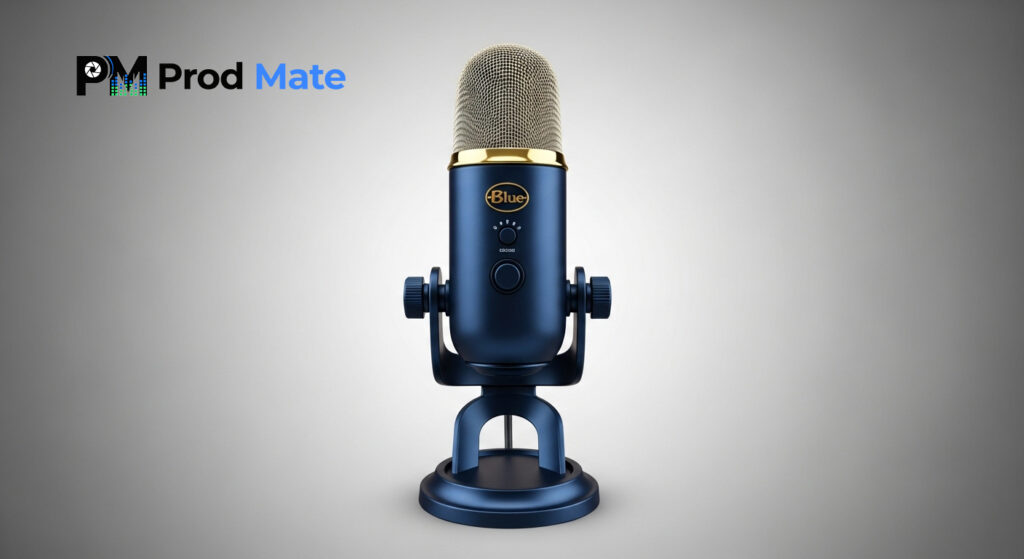
The Blue Yeti is a USB condenser microphone designed by Blue Microphones (now owned by Logitech). Released in 2009, it quickly became a global bestseller, often recommended as the default starter mic for creators. Unlike traditional studio microphones that require mixers or audio interfaces, the Yeti connects directly to your computer via USB, making it easy for anyone to get professional-sounding audio without complex gear.
Key Features at a Glance:
- Tri-capsule condenser array for flexible recording.
- Four polar patterns: cardioid, bidirectional, omnidirectional, and stereo.
- Plug-and-play USB connectivity—no drivers needed.
- Built-in controls: gain dial, mute button, pattern selector.
- Zero-latency headphone monitoring via 3.5mm jack.
- Solid build quality with an adjustable desk stand.
For beginners, the Yeti removes the technical barrier of learning about audio interfaces, phantom power, or XLR connections. That simplicity is one reason why this Blue Yeti microphone review is so focused on usability—it’s truly designed for plug-and-play creators.
Why Choose the Blue Yeti?
Advantages of the Blue Yeti USB Microphone Over Other Entry-Level Mics

You may be wondering why the Yeti gets so much praise when cheaper USB mics exist. The truth lies in its combination of features and sound quality at a reasonable price point.
Beginner-Friendly Benefits:
- No Setup Hassle – Just plug it in and select it in your recording software.
- Professional Audio Quality – Delivers crisp, detailed recordings far superior to built-in laptop or webcam mics.
- Multiple Polar Patterns – Versatility makes it usable for solo creators, interviews, music, and conference calls.
- Durability – Heavy metal chassis and sturdy build.
- Wide Community Support – Tons of tutorials, guides, and accessories available because so many people use it.
At around $100 on Amazon, the Blue Yeti delivers professional-quality audio at a price that’s affordable for beginners while still offering features usually found in more expensive studio microphones.
This Blue Yeti USB microphone review highlights the fact that the Yeti isn’t just a mic—it’s a learning tool. As you grow, you can experiment with polar patterns, gain staging, and mic technique, all without buying additional gear.
Setting Up the Blue Yeti for the First Time
From Box to Broadcast in Minutes
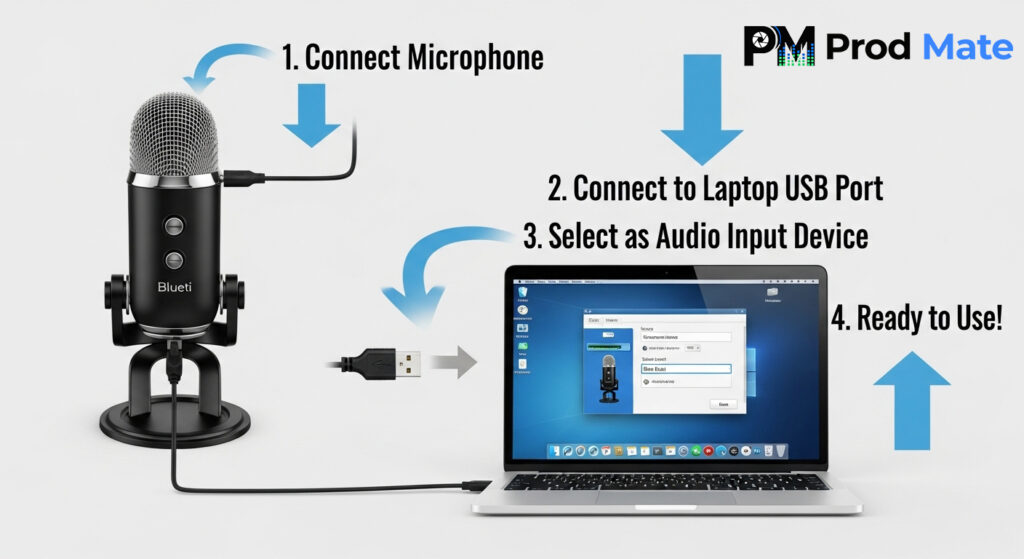
One of the best things about the Yeti is how quickly you can start recording.
Step-by-Step Setup:
- Unbox and place on desk – The included stand works for most beginners.
- Connect USB cable – It’s instantly recognized by both Windows and macOS.
- Select mic in software – Choose “Yeti” in Zoom, OBS, Audacity, GarageBand, or your DAW.
- Adjust controls – Use the gain knob to prevent distortion and the mute button when needed.
- Plug in headphones – Monitor your voice with zero delay.
Common Beginner Mistakes to Avoid:
- Speaking into the top instead of the front (the Yeti captures from the side with the Blue logo).
- Setting gain too high, which makes recordings noisy.
- Sitting too far (sounds thin) or too close (causes plosives).
A few minutes of setup and positioning can make the difference between amateur and professional sound quality.
Sound Quality and Performance
What You’ll Really Sound Like
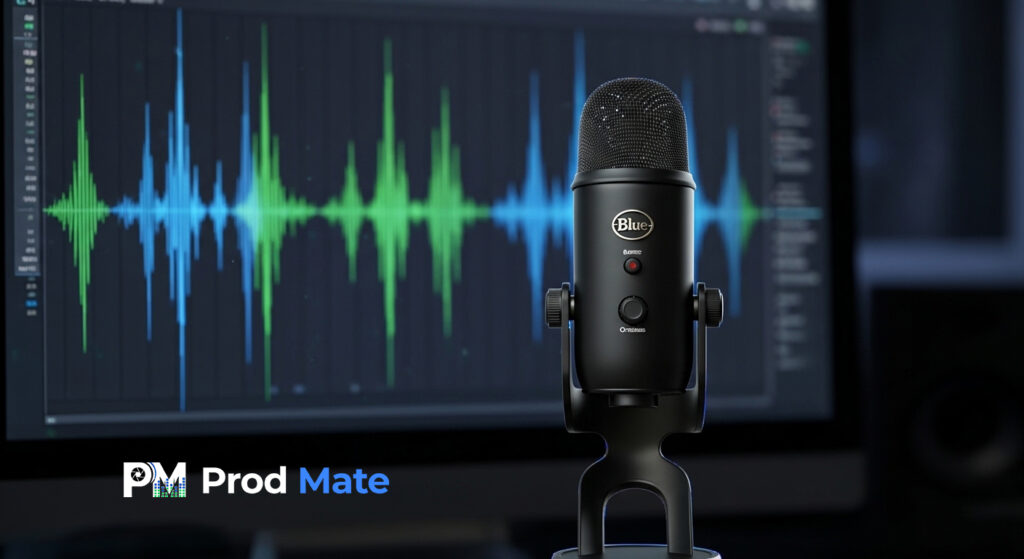
The most important part of any Blue Yeti microphone review is sound quality. The Yeti delivers clear, full-bodied recordings, with a frequency response (20Hz–20kHz) that captures the full vocal range.
Polar Pattern Modes Explained:
- Cardioid – Best for podcasts, streams, or solo voice recordings. It picks up sound directly in front while rejecting background noise.
- Bidirectional – Records the front and back, useful for interviews with two speakers.
- Omnidirectional – Captures sound equally from all directions, ideal for round-table discussions.
- Stereo – Creates left-right separation, great for instruments or ASMR content.
Strengths:
- Excellent clarity for spoken word.
- Works well for acoustic guitar, piano, or basic music recordings.
- Clean headphone monitoring with no latency.
Limitations:
- Being a condenser mic, it’s sensitive to background noise (fans, typing, traffic).
- Can sound overly bright in untreated rooms.
- Some users find the sound a little “digital” compared to XLR studio mics.
For beginners, though, the audio quality is more than enough to impress listeners.
Pros & Cons in Detail
Balanced View for Beginners
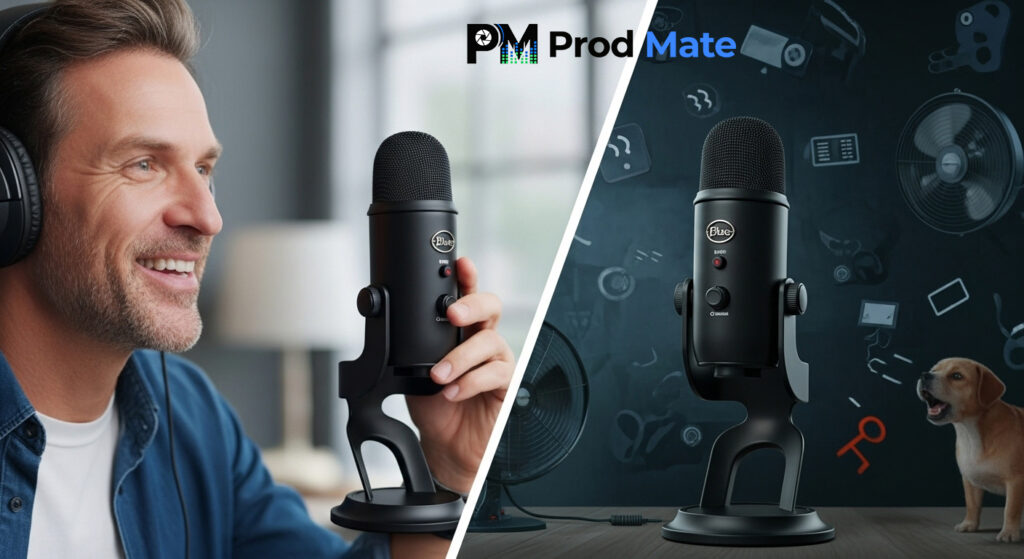
Pros:
- Delivers premium features at an affordable price point (around $100).
- Easy USB setup—no need for extra hardware.
- Multiple pickup patterns for versatility.
- Solid build quality with a premium feel.
- Widely compatible with streaming and recording software.
Cons:
- Bulky and heavy—not the most portable mic.
- Desk stand picks up keyboard vibrations unless isolated.
- Requires accessories (pop filter, boom arm) for best results.
- Picks up ambient noise easily.
This Blue Yeti USB microphone review wouldn’t be complete without acknowledging that while the Yeti is excellent, it’s not perfect. Still, its pros outweigh the cons for most beginners.
Accessories to Enhance Your Blue Yeti
Take Your Setup to the Next Level
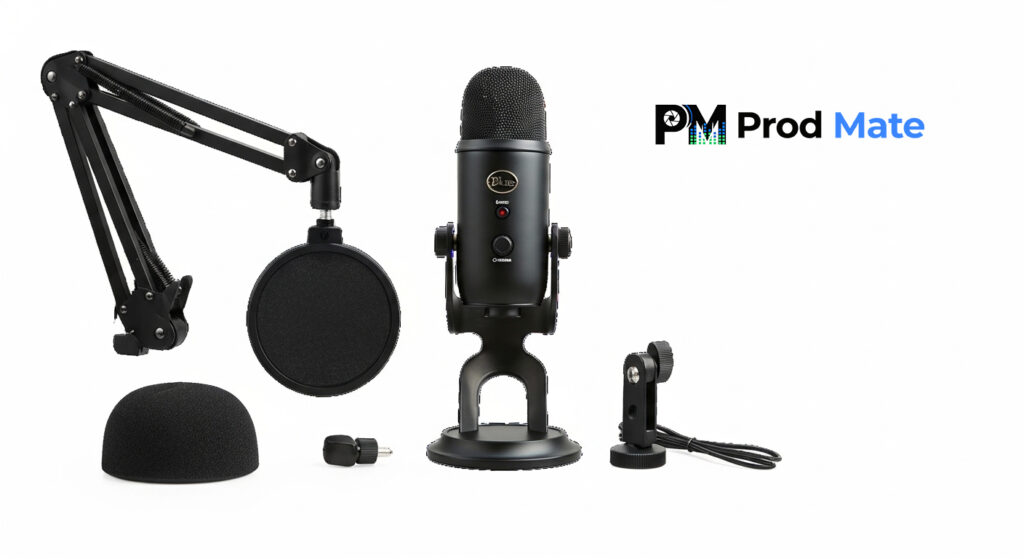
If you want to get the best possible sound, consider adding a few accessories:
- Pop filter or foam windscreen – Reduces plosive “P” and “B” sounds.
- Shock mount – Isolates the mic from vibrations (typing, desk bumps).
- Boom arm – Provides flexible positioning and frees desk space.
- Acoustic treatment – Foam panels or rugs to reduce echo in your room.
Even just adding a pop filter and boom arm can dramatically improve recordings. Many creators buy the Yeti as a starter mic, then slowly upgrade their setup with these extras.
Who Is the Blue Yeti Best For—and Who Should Look Elsewhere?
Perfect Matches and Mismatches

Best Suited For:
- Podcasters – Clear cardioid recording and easy setup.
- Streamers – Great audio for Twitch, YouTube, or gaming streams.
- Voice-over artists – Affordable way to get into professional-sounding narration.
- Remote workers – A huge upgrade for Zoom calls and webinars.
Not Ideal If:
- You’re in a noisy room with lots of background sound.
- You want a dynamic mic’s noise rejection (e.g. Shure SM58, Samson Q2U).
- You plan on upgrading to professional XLR studio setups soon.
Tips for Beginners to Get Professional Sound
Simple Tricks to Sound Like a Pro

- Use cardioid mode for most recording situations.
- Speak 5–6 inches away from the mic for balance.
- Keep gain at around 50% to avoid distortion.
- Record in a quiet space—turn off fans and minimize echo.
- Monitor with headphones to catch issues early.
- Edit lightly in free software like Audacity to remove noise or EQ vocals.
These steps may seem small, but together they transform a basic recording into something polished and professional.
Comparisons With Other Mics
How the Yeti Stacks Up
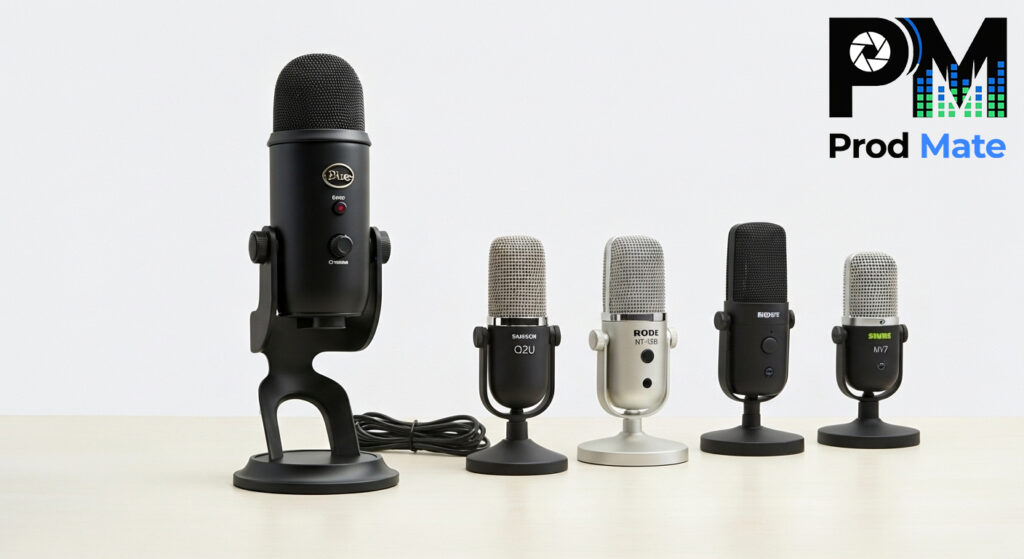
- Versus Samson Q2U – Q2U is a dynamic mic with USB + XLR; better at rejecting noise, but lacks multi-pattern versatility.
- Versus Blue Snowball – The Snowball is cheaper but less detailed and less versatile.
- Versus Rode NT-USB – Rode sounds warmer but is pricier; Yeti has more recording modes.
- Versus Shure MV7 – The MV7 is a hybrid USB/XLR dynamic mic, more professional, but nearly double the price.
This shows why the Yeti remains a sweet spot for beginners—great features, great sound, reasonable price.
Blue Yeti USB Microphone Specifications Summary
| Feature | Details |
|---|---|
| Microphone Type | Condenser, Tri-Capsule Array |
| Polar Patterns | Cardioid, Bidirectional, Omnidirectional, Stereo |
| Frequency Response | 20 Hz – 20 kHz |
| Bit Depth / Sample | 16-bit / 48 kHz |
| Connectivity | USB 2.0 (Plug-and-Play, no drivers needed) |
| Controls | Gain Control, Pattern Selector, Mute Button |
| Monitoring | Zero-latency 3.5mm headphone jack with volume control |
| Power Required | USB-powered (no phantom power needed) |
| Compatibility | Windows 7+, macOS 10.10+, works with most recording/streaming software |
| Included Accessories | Adjustable desktop stand, USB cable |
| Dimensions | 4.72 x 4.92 x 11.61 in (120 x 125 x 295 mm) |
| Weight | ~1.2 kg (2.8 lbs, including stand) |
| Colors Available | Blackout, Silver, Midnight Blue, Whiteout, Special Editions |
| Price | ~100$ |
| Availability at Amazon | Available with discount |
FAQs About the Blue Yeti
Quick Answers to Common Beginner Questions
Q: Does the Blue Yeti need phantom power?
No. It’s powered via USB.
Q: Can I use it with iPhone or iPad?
No. It’s powered via USB.
Q: Can I use it with iPhone or iPad?
Yes, with a USB adapter (Lightning to USB Camera Adapter).
Q: Is the Blue Yeti good for gaming?
Absolutely. Streamers love it for clear voice chat and commentary.
Q: Does it work with Zoom/Teams?
Yes, just select “Yeti” as the microphone input.
Q: Is the Blue Yeti worth it in 2025?
Yes. Even years after launch, it still ranks as one of the best beginner mics.
Conclusion
The Final Verdict of This Blue Yeti Microphone Review
The Blue Yeti remains one of the most popular USB microphones in the world—for good reason. It combines ease of use, professional-level audio, and flexibility at a price point that’s accessible to beginners. While not perfect—it can pick up background noise and benefits from accessories—its overall value is hard to beat.
For anyone starting out in content creation, podcasting, or streaming, this Blue Yeti USB microphone review proves why the Yeti is still a safe and smart choice.
If You have any other Questions, Don’t hesitate to Contact Us.
📌 Want to compare it with one of the most popular USB mics ever? Check out our full RØDE NT-USB+ Microphone Review.
That article breaks down the strengths of the Yeti and shows exactly how it stacks up against the NT-USB+.
Final Buying Guide for the Blue Yeti USB Microphone
ProdMate Rating
Summary
Overall Score: 4.7 / 5 – One of the best beginner USB microphones available in 2025.
Best Deals Today
- ✅ Amazon Deal: Check the latest price here – usually around $100.
- ✅ Multiple color options available and Blackout Edition.
- ✅ Bundle offers (with boom arm + pop filter) often discounted.
💡 Pro Tip: Look out for seasonal sales like Prime Day or Black Friday for the best price.
User Reviews
Summary
Overall, user feedback on the Blue Yeti USB microphone is overwhelmingly positive. Most reviewers praise its plug-and-play simplicity, clear and professional sound quality, and versatility across different use cases like podcasting, streaming, online teaching, and music. The most common criticism is its sensitivity to background noise and its bulky size, but many users note that accessories like a pop filter, boom arm, or basic room treatment solve these issues.
👉 The consensus is clear: for beginners who want professional-sounding audio without spending hundreds of dollars, the Blue Yeti remains one of the best choices available.
Ready to upgrade your sound and take your content to the next level?

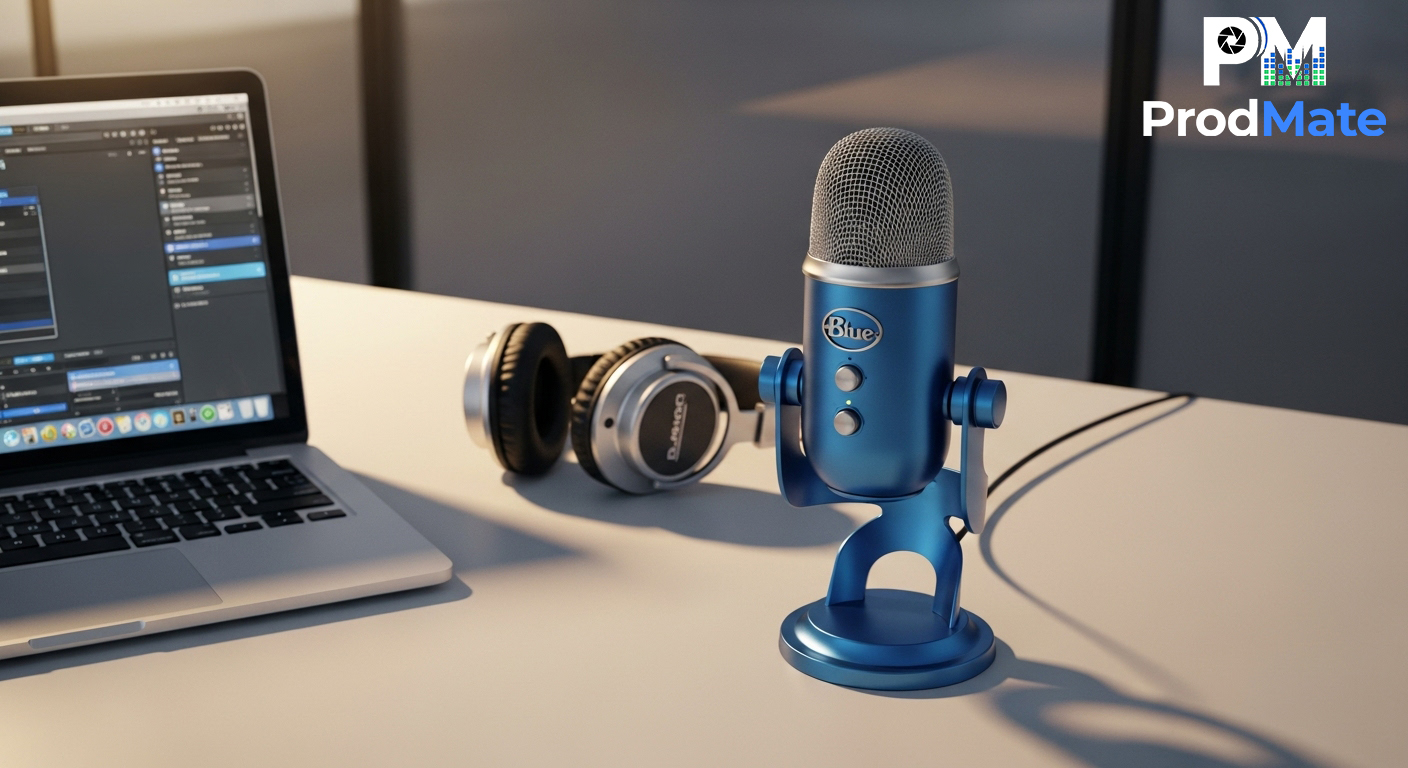
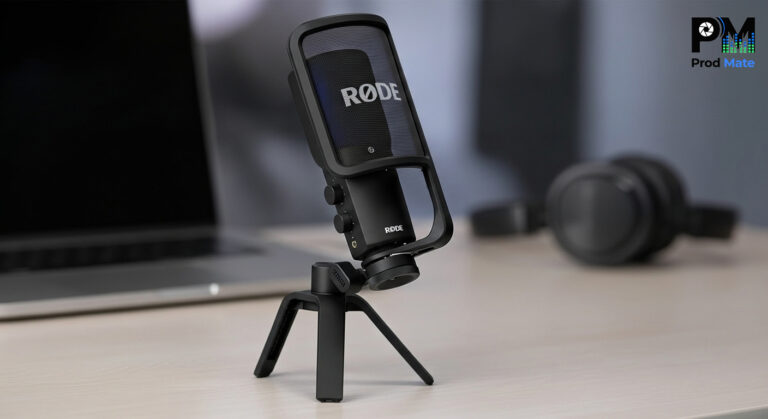
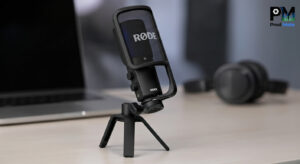
Pingback: مراجعة ميكروفون Blue Yeti Mic: لماذا ما زال الأفضل للمبتدئين في 2025؟ - ProdMate
I’m not that much of a internet reader to be honest but your blogs really nice, keep it up! I’ll go ahead and bookmark your site to come back down the road. Many thanks
Heya i am for the first time here. I found this board and I to find It truly helpful & it helped me out much. I hope to offer one thing back and help others like you aided me.
Greetings! Very helpful advice in this particular article! It’s the little changes that will make the most significant changes. Thanks a lot for sharing!